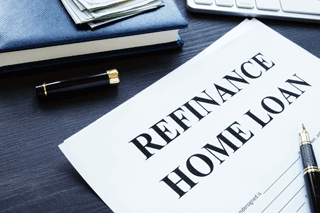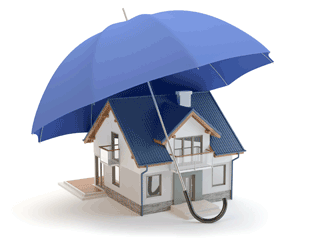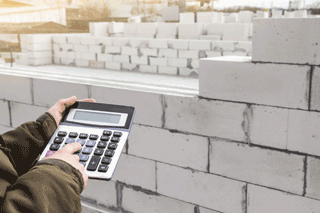Quote Of The Week
“With Australia’s domestic and international borders now largely reopening, universities returning to in-person lectures and people returning to offices throughout 2022, we expect demand for inner city rentals to continue to lift.”
Cameron Kusher of REA Group’s PropTrack
More Borrowers Switching Lenders
 Property owners are shopping around for better finance deals, with Australian Bureau of Statistics figures revealing $14.3 billion worth of refinancing in January.
Property owners are shopping around for better finance deals, with Australian Bureau of Statistics figures revealing $14.3 billion worth of refinancing in January.
Of that, $9.2 billion was refinancing by owner occupiers with the remaining $5.1 billion from investors.
The figures show refinancing levels are 18.7% higher than at the same time in 2021 while a record $181 billion worth of loans were refinanced in 2021.
Those considering taking advantage of good rates on offer, will need a loan to value ratio of more than 80%, while for borrowers locked into a fixed interest rate the penalty for breaking that may not make it worthwhile.
Most banks will seriously consider requests from current borrowers to match fees offered by other banks, in an effort to keep their customers on their books.
Those who do achieve lower interest rates can shave years off their loans and save thousands of dollars in the long run if they maintain the higher level of repayments.
Auctions Results Defy Bad Weather
 Flooding and torrential downpours along the east coast of Australia did little to dampen enthusiasm for the auction market last weekend.
Flooding and torrential downpours along the east coast of Australia did little to dampen enthusiasm for the auction market last weekend.
The number of properties offered for auction dropped slightly compared with the previous week (3,386) but there were still a healthy 2,945 properties put under the hammer.
CoreLogic results show Sydney recorded a slightly lower clearance rate of 75% while Melbourne was also down slightly to 71%.
Even though Brisbane was hard hit by flooding it recorded an auction clearance rate of 70% from 180 auctions, while Adelaide recorded the highest clearance rate of 82% based on 194 auctions.
Canberra’s clearance rate was 76% based on 140 auctions.
Louis Christopher of SQM Research says there are still more properties being taken to auction than at the same time last year.
He says the drop in the number of properties being taken to auction last week was reflective of the general seasonal slowdown in auctions at the start of March.
Rents Are Rising In All Sectors
 Inner city rental markets are bouncing back with the opening of international borders.
Inner city rental markets are bouncing back with the opening of international borders.
Cameron Kusher of REA Group’s PropTrack says while inner city units experienced some of the biggest price drops at the start of the pandemic, that is now set to turn around.
“With Australia’s domestic and international borders now largely reopening, universities returning to in-person lectures and people returning to offices throughout 2022, we expect demand for inner city rentals to continue to lift,” Kusher says.
CoreLogic figures show capital cities, regional areas, houses and units all experienced rent rises in the past quarter.
Rents are increasing across Australia because vacancy rates have hit a 16-year low, according to Louis Christopher of SQM Research.
“All this represents an acute shortage of rental properties,” he says. “And the shortage has already been translating into large surges in weekly rents across the country. It is now very likely market rents will rise by over 10% this year.”
Rent Stress Up, Mortgage Stress Down
 The tight rental market means the number of people in rental stress increased substantially in the past 12 months.
The tight rental market means the number of people in rental stress increased substantially in the past 12 months.
At the same time, according to ME Bank’s Household Financial Comfort Report, mortgage stress reduced.
The report surveyed 1,500 Australian households and found 67% were in rental stress as their rent exceeded a third of their household disposable income.
Almost a fifth of renters were in extreme rental stress, putting more than 60% of their income towards rent. That level was 12% just 12 months ago.
The report says rents are rising faster than incomes and renters are struggling to keep up with that and other cost-of-living increases.
It found the number of owners dealing with mortgage stress dropped to 35%, compared with 37% a year ago.
ME consulting economist Jeff Oughton says that, on the surface, the financial comfort of the average Australian looks better than ever – but it is fragile.
“It has begun to fall for many households,” he says.
Shortages Push Up New House Costs
 The average cost of a new home increased by 19.6% in the past year as a result of surging labour and material costs.
The average cost of a new home increased by 19.6% in the past year as a result of surging labour and material costs.
Australian Bureau of Statistics figures show year-on-year inflation in new house values hit the highest rate in more than 30 years.
The rising costs have resulted in a number of building firms going into liquidation or reporting losses.
The Simonds Group, one of Australia’s largest home builders, reported a loss for the six months to December.
Total new dwelling approvals dropped 28% but many builders have full workbooks trying to deliver houses they signed up under fixed price contracts under the Federal Government’s HomeBuilder scheme.
BIS Oxford Economics principal economist Tim Hibbert says the backlog would take some time to clear and would likely continue well into 2023.
“The cost growth profile is going to be strong into 2022 – well into double digits nationally for houses and that’s on top of a pretty frothy 2021,” he says.




